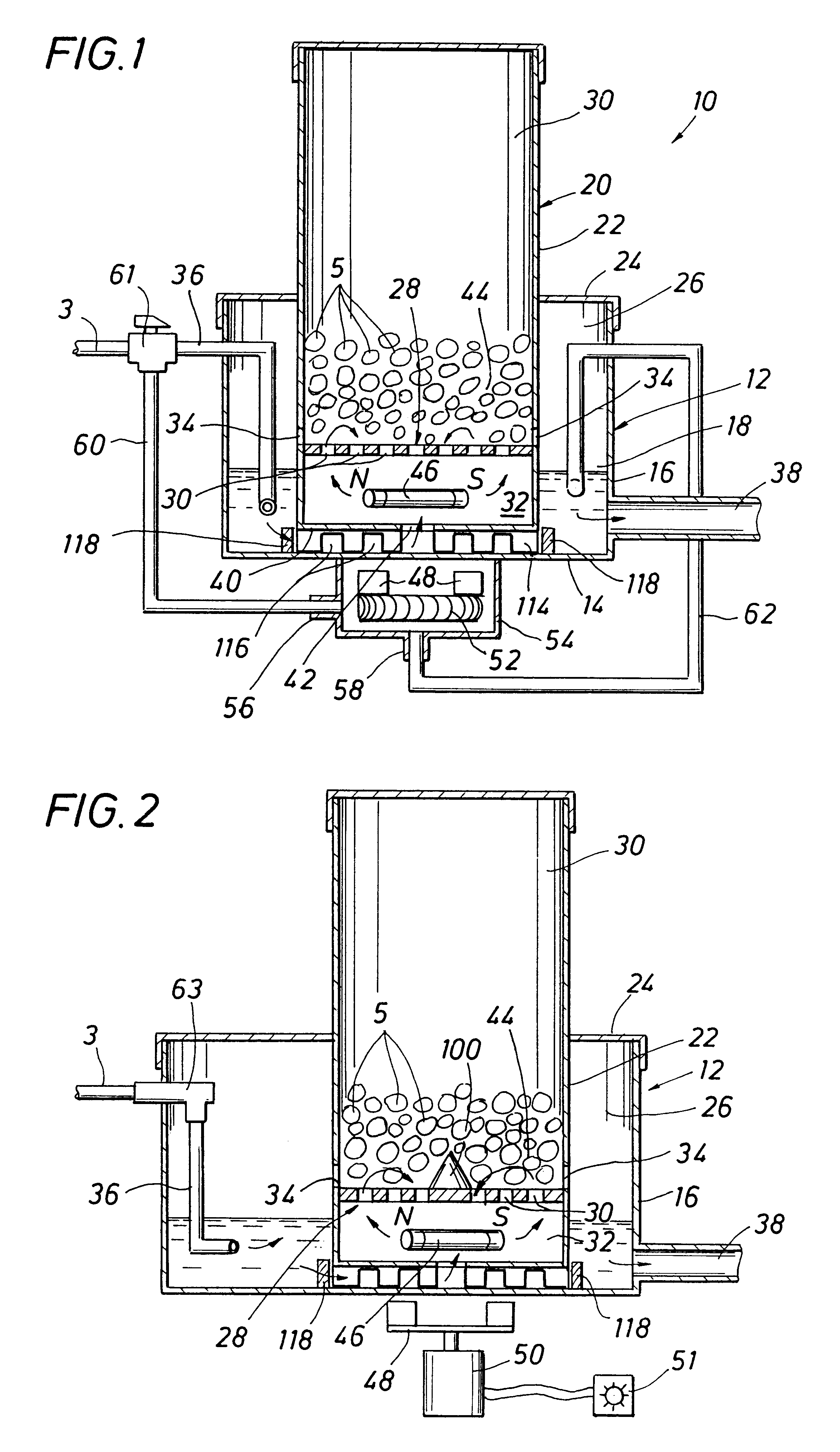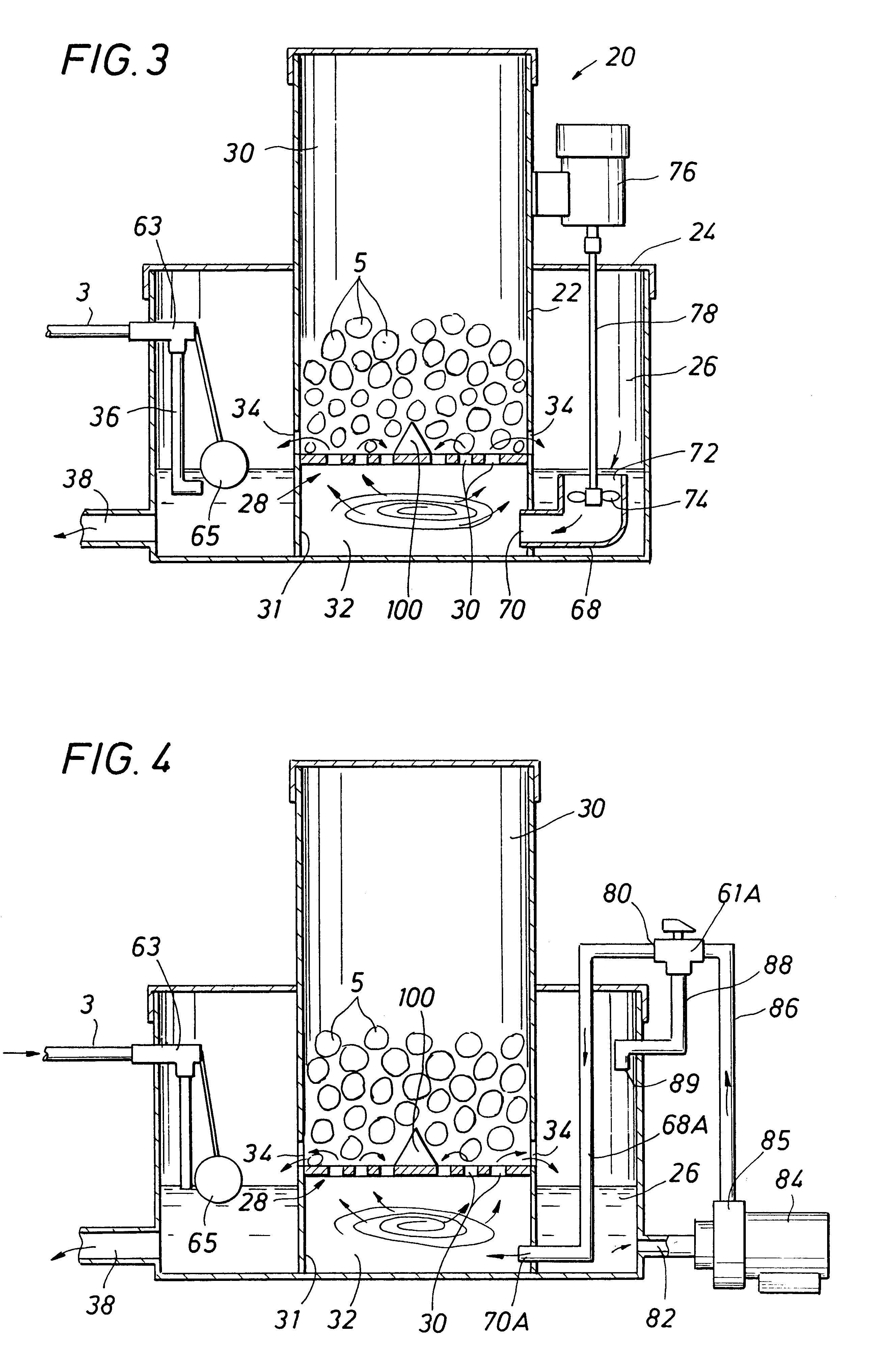Chlorination apparatus and method
a chlorination apparatus and chlorination technology, applied in the direction of sedimentation separation, dissolution, chemical/physical processes, etc., can solve the problems of difficult precise and even dissolution, difficult to maintain consistent performance with existing erosion dissolution apparatus and methods, and high cos
- Summary
- Abstract
- Description
- Claims
- Application Information
AI Technical Summary
Problems solved by technology
Method used
Image
Examples
first embodiment
The control of the recirculation of treating solution, by means of the three way diverting valve 61, makes it possible to vary the rate of dissolution of tablets 5 within the container 20 without changing the flow rate of water passing through the apparatus 10. In other words, unlike in prior systems, the flow rate of untreated water input to the collection reservoir 26 (e.g., from inlet 3 as applied to collection reservoir 26 from the three way valve 61, line 36, and from the turbine output fluid line 62) is the same as the flow rate of treated solution water via the output line 38, and yet a variable output of chemical concentration of treated water is achieved. The arrangement and method of the invention is powered and controlled by the flow of a fixed volume of water entering into and being recirculated to various degrees, as controlled by the position of the three way diverting valve 61, through the mixing chamber 32.
second embodiment
a constant flow rate, variable chemical concentration output arrangement, as illustrated in the schematic diagram of FIG. 2, provides a variable speed motor 50, manually controllable by a controller 51, to turn the driving magnetic bar 48 located outside the mixing chamber 32. Again, the flow rate of liquid via the untreated liquid inlet 3 is the same as the flow rate of treated water output via outlet 31. The manually controlled variable speed motor 50, controllable by means of controller 51, controls the level of mixing, and therefore the rate of dissolution of chemical tablets in the liquid dissolving zone 44 in the upper chamber 30 and therefore the amount of dissolved chemical from tablets 5 in the constant flow rate of liquid exiting from liquid collection reservoir 26.
Also illustrated in FIG. 2 is a deflector 100 of a cone shape mounted on the center of grid 28, which causes tablets 5 to fall radially away from the longitudinal axis of the grid 28 in order to prevent bridging...
PUM
| Property | Measurement | Unit |
|---|---|---|
| Current | aaaaa | aaaaa |
| Current | aaaaa | aaaaa |
| Current | aaaaa | aaaaa |
Abstract
Description
Claims
Application Information
 Login to View More
Login to View More - R&D
- Intellectual Property
- Life Sciences
- Materials
- Tech Scout
- Unparalleled Data Quality
- Higher Quality Content
- 60% Fewer Hallucinations
Browse by: Latest US Patents, China's latest patents, Technical Efficacy Thesaurus, Application Domain, Technology Topic, Popular Technical Reports.
© 2025 PatSnap. All rights reserved.Legal|Privacy policy|Modern Slavery Act Transparency Statement|Sitemap|About US| Contact US: help@patsnap.com



